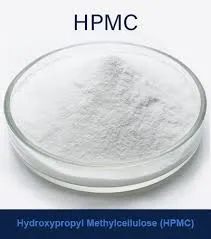
dets. . 12, 2024 11:19 Back to list
hpmc solubility in organic solvents
HPMC Solubility in Organic Solvents An Overview
Hydroxypropyl methylcellulose (HPMC) is a versatile cellulose derivative widely used across various industries, including pharmaceuticals, food, cosmetics, and construction. Its unique properties, such as biocompatibility, film-forming ability, and rheological characteristics, make HPMC an essential ingredient in numerous formulations. Understanding the solubility of HPMC in organic solvents is critical for optimizing its use in various applications.
Chemical Structure and Properties of HPMC
HPMC is derived from cellulose through a series of chemical modifications involving propylene oxide and methyl chloride. The degree of substitution of the hydroxyl groups on the cellulose chain determines the solubility and other functional properties of HPMC. Generally, it is soluble in water, but its solubility behavior in organic solvents is of considerable interest, as this impacts its performance in different applications.
HPMC is characterized by its hydrophilic nature, which is attributed to the presence of hydroxyl groups in its structure. This hydrophilicity allows HPMC to dissolve in water to form viscous solutions. However, the solubility of HPMC in organic solvents is influenced by several factors, including the type of solvent, temperature, and molecular weight of the polymer.
Solubility of HPMC in Organic Solvents
Typically, HPMC is not soluble in non-polar organic solvents such as hexane, toluene, or chloroform, largely due to the hydrophilic nature of the polymer. However, it demonstrates a certain degree of solubility in polar aprotic solvents like dimethyl sulfoxide (DMSO) and dimethylformamide (DMF). These solvents can solvate the hydrophilic portions of HPMC, leading to the dissolution of the polymer.
hpmc solubility in organic solvents

The solubility behavior can also be affected by the molecular weight of HPMC. Higher molecular weight polymers may require more stringent conditions for solubilization, while lower molecular weight HPMC tends to dissolve more readily. Moreover, the presence of other solubilizing agents or co-solvents can enhance the solubility of HPMC in specific organic media.
Applications of HPMC in Organic Solvents
The ability of HPMC to dissolve in certain organic solvents opens up a range of applications. In the pharmaceutical industry, for instance, HPMC is often used as a binder in tablet formulations; it can also serve as a coating material to control the release profile of drugs. The solubility in organic solvents allows the formulation of films and coatings using HPMC for controlled drug delivery systems.
In the cosmetics industry, HPMC is frequently employed as a thickening agent and emulsifier in creams and lotions. Its solubility in organic solvents can contribute to the stability of products by influencing their viscosity and texture. As a thickener, HPMC helps to achieve the desired consistency while enhancing the overall aesthetic appeal of the product.
The construction industry also benefits from the properties of HPMC, particularly in tile adhesives and mortars. The polymer's ability to retain water and improve workability is invaluable in these applications. The solubility in organic solvents enables the modification of HPMC for use in solvent-based formulations, extending its utility in various types of construction materials.
Conclusion
HPMC is an essential polymer whose solubility characteristics in organic solvents significantly influence its applications across different industries. Although it primarily exhibits hydrophilic behavior, its solubility in specific polar solvents presents opportunities for innovative formulations in pharmaceuticals, cosmetics, and construction. Understanding the factors that affect the solubility of HPMC can guide researchers and formulators in optimizing its performance for enhanced product efficacy. Further research into new solvent systems and formulations could expand the scope of HPMC applications even further, providing exciting avenues for development in the future. The versatility and adaptability of HPMC ensure its continued relevance in materials science and formulation chemistry, making it a valuable asset in addressing contemporary challenges across multiple fields.
-
Versatile Hpmc Uses in Different Industries
NewsJun.19,2025
-
Redispersible Powder's Role in Enhancing Durability of Construction Products
NewsJun.19,2025
-
Hydroxyethyl Cellulose Applications Driving Green Industrial Processes
NewsJun.19,2025
-
Exploring Different Redispersible Polymer Powder
NewsJun.19,2025
-
Choosing the Right Mortar Bonding Agent
NewsJun.19,2025
-
Applications and Significance of China Hpmc in Modern Industries
NewsJun.19,2025







